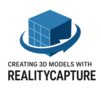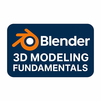
This comprehensive course is designed for new and intermediate users aiming to master AVEVA P&ID. Participants will learn how to create and manage intricate piping and instrumentation diagrams efficiently. The training covers fundamental concepts, software navigation, symbol customization, and adherence to industry standards. Emphasis is placed on practical exercises and real-world scenarios to ensure users are well-prepared to contribute to their projects immediately after course completion.
AVEVA P&ID User Interview Questions Answers - For Intermediate
1. Explain how AVEVA P&ID facilitates regulatory compliance.
The software ensures regulatory compliance by incorporating standards and codes specific to different regions and industries into the design process. This helps in creating P&IDs that meet legal and safety requirements.
2. What are the best practices for maintaining the accuracy of P&IDs?
Best practices include regular updates and revisions, consistent use of tagging and annotations, adherence to industry standards, and continuous training of personnel on the latest features and functionalities of the software.
3. How does AVEVA P&ID handle large-scale projects with multiple P&IDs?
For large-scale projects, AVEVA P&ID manages multiple P&IDs by linking them through a common database and providing tools for bulk editing and updating, which saves time and reduces the likelihood of errors.
4. What are the training requirements for new users of AVEVA P&ID?
New users require training on the basics of P&ID design, software navigation, customization of templates and symbols, and best practices for data management and quality control.
5. Can AVEVA P&ID be integrated with ERP systems? If so, how?
Yes, AVEVA P&ID can be integrated with ERP systems through data exchange formats and APIs that facilitate the flow of information from P&ID to ERP systems for procurement, inventory management, and other processes.
6. Describe a challenging scenario you have encountered with AVEVA P&ID and how you resolved it.
A challenging scenario could involve merging P&ID data from different phases of a project. This was resolved by utilizing the software’s merging tools and conducting thorough reviews to ensure consistency and accuracy across all diagrams.
7. How do you manage access permissions in AVEVA P&ID?
Access permissions are managed through user roles and privileges set in the software, which control what users can view, edit, or delete. This is crucial for protecting sensitive project information and ensuring that changes are made only by authorized personnel.
8. What are the system requirements for running AVEVA P&ID efficiently?
The system requirements include a compatible operating system, adequate RAM and processing power, sufficient storage, and a supported database system. Ensuring these requirements are met is vital for optimal performance of the software.
9. How do you update P&ID components in AVEVA P&ID?
Components in a P&ID are updated by selecting the component and editing its properties or replacing it with another component from the library. Changes are automatically updated across all related documents.
10. What is the role of the database in AVEVA P&ID?
The database in AVEVA P&ID stores all the information related to the P&ID components, such as specifications, design details, and revisions. This central repository ensures that the data is consistent and easily accessible.
11. How does AVEVA P&ID support sustainability in design?
The software supports sustainability by enabling designers to create efficient and optimized P&IDs that reduce material waste and energy consumption, contributing to more sustainable engineering practices.
12. What is the significance of the audit trail feature in AVEVA P&ID?
The audit trail feature records all changes made to a P&ID, providing a detailed history of modifications. This is important for traceability, compliance, and project management.
13. How do you ensure the security of P&ID data in AVEVA?
Data security is ensured through encryption, secure access controls, and regular backups. These measures protect the data from unauthorized access and loss.
14. Can AVEVA P&ID handle dynamic updates from field data?
Yes, AVEVA P&ID can handle dynamic updates by integrating with data collection systems that feed real-time data from the field. This allows for the P&IDs to reflect the current state of the plant accurately.
15. What future developments do you anticipate for AVEVA P&ID?
Future developments may include enhanced AI capabilities for automated design suggestions, improved integration with real-time data analytics tools, and advanced collaboration features for cloud-based teamwork.
AVEVA P&ID User Interview Questions Answers - For Advanced
1. How do you anticipate future developments in AVEVA P&ID technology, particularly with the advent of AI and machine learning?
Future developments in AVEVA P&ID technology are likely to include the integration of AI and machine learning algorithms that can automate various aspects of P&ID design, such as auto-generating piping layouts based on optimal flow dynamics or predictive maintenance alerts based on historical data and usage patterns. AI could also enhance the software's ability to identify potential design errors or inefficiencies by analyzing vast amounts of data and learning from past projects.
2. What challenges might arise when migrating from an older P&ID software to AVEVA P&ID, and how can these be effectively managed?
Migrating from older P&ID software to AVEVA P&ID can present challenges such as data compatibility issues, user adaptation to the new system, and potential data loss during the transition. These challenges can be managed by thorough planning, which includes comprehensive data mapping, pilot testing to identify potential issues and structured training programs for users to familiarize them with AVEVA P&ID's features and capabilities.
3. Discuss the benefits and considerations of cloud-based deployment of AVEVA P&ID.
Deploying AVEVA P&ID in a cloud-based environment offers benefits such as scalability, flexibility in access, and reduced IT infrastructure costs. However, considerations must include data security, especially in industries with stringent privacy regulations, and ensuring reliable internet connectivity to access cloud resources. Proper planning and choosing the right cloud provider who complies with industry standards are crucial for a successful deployment.
4. How does AVEVA P&ID contribute to sustainable engineering practices?
AVEVA P&ID contributes to sustainable engineering practices by enabling the design of efficient and resource-conserving systems. The software allows for the optimization of material use and energy consumption, which not only reduces operational costs but also minimizes environmental impact. Additionally, by facilitating accurate and compliant P&ID designs, AVEVA P&ID helps prevent environmental risks associated with plant operations.
5. Explain how AVEVA P&ID can be customized to accommodate a specific industry's workflow, such as pharmaceuticals or oil and gas.
Customizing AVEVA P&ID for specific industries involves configuring the software to reflect industry-specific standards, workflows, and regulatory requirements. For example, in the pharmaceutical industry, the software can be customized to include validation protocols and clean design practices, while in the oil and gas industry, it might focus on safety systems and redundancy. Customization ensures that P&IDs fully support industry-specific operational, safety, and compliance needs.
6. What considerations should be taken into account when updating or upgrading AVEVA P&ID software in an existing project?
When updating or upgrading AVEVA P&ID software in an existing project, considerations should include compatibility with existing data, training needs for new features, and potential downtime during the upgrade process. It is also important to ensure that all project data is backed up before initiating the upgrade and to perform a thorough testing phase to identify any issues that might arise from the new software version.
7. Describe the role of AVEVA P&ID in project scheduling and resource allocation.
AVEVA P&ID plays a vital role in project scheduling and resource allocation by providing a clear and detailed representation of the project's piping and instrumentation aspects. This allows project managers to estimate timelines and resource needs more accurately, plan the sequence of construction activities, and allocate resources efficiently, thereby optimizing the overall project execution plan.
8. How can AVEVA P&ID be used to enhance safety in plant design and operation?
AVEVA P&ID enhances safety in plant design and operation by allowing for the detailed planning of safety systems, such as pressure relief valves, emergency shutdown systems, and fire protection equipment. By accurately depicting these components in the P&IDs, engineers can ensure that all safety measures are properly integrated into the plant design, significantly reducing the risk of accidents and ensuring compliance with safety regulations.
9. Discuss the process of conducting a stress analysis using AVEVA P&ID.
While AVEVA P&ID itself does not perform stress analysis, it plays a crucial role in facilitating this process by providing accurate and detailed P&ID diagrams that are used as the basis for stress analysis in specialized software. The diagrams include necessary information such as piping configuration, material specifications, and operating conditions, which are critical inputs for conducting stress analysis to ensure the structural integrity of the piping system under different operational scenarios.
10. What are the potential impacts of not regularly updating P&ID diagrams in AVEVA P&ID during the lifecycle of a plant?
Failing to regularly update P&ID diagrams in AVEVA P&ID can lead to several negative impacts, including safety risks due to outdated or incorrect information, inefficiencies in operation and maintenance activities, and potential non-compliance with regulatory requirements. Regular updates ensure that the P&ID diagrams accurately reflect the current configuration of the plant, which is essential for safe and efficient operations.
11. How does AVEVA P&ID assist in the decommissioning phase of a plant?
During the decommissioning phase of a plant, AVEVA P&ID assists by providing detailed diagrams that can be used to plan the dismantling process systematically. The P&IDs show the configuration of the plant's systems, helping to identify hazardous materials, plan waste disposal, and ensure that decommissioning activities are conducted safely and in compliance with environmental regulations.
12. Explain the significance of the interoperability of AVEVA P&ID with other AVEVA software products.
The interoperability of AVEVA P&ID with other AVEVA software products, such as AVEVA Marine and AVEVA Electrical, is significant as it allows for a cohesive and integrated approach to project design and management. This interoperability facilitates the seamless transfer of data across different software platforms, enhancing collaboration among different engineering disciplines and leading to more cohesive project outcomes.
13. What are the training and support options available for AVEVA P&ID users?
AVEVA provides a range of training and support options for AVEVA P&ID users, including online tutorials, classroom training sessions, webinars, and user conferences. Additionally, AVEVA offers technical support services through its customer support centers, providing assistance with software issues, upgrades, and best practices for using the software effectively.
14. How do customization and extensibility features in AVEVA P&ID support specific project requirements?
The customization and extensibility features in AVEVA P&ID support specific project requirements by allowing users to adapt the software to their particular needs. This includes the ability to create custom symbols, generate tailored reports, and develop bespoke plugins that enhance functionality. Such flexibility is crucial for aligning the software with unique project demands and industry-specific challenges.
15. Discuss the future trends in P&ID design that AVEVA P&ID might adapt to.
Future trends in P&ID design that AVEVA P&ID might adapt to include greater integration with Internet of Things (IoT) technologies for real-time data collection and analysis, the use of augmented reality (AR) for enhanced visualization and interaction with P&ID diagrams, and increased automation of design processes using AI. These advancements could lead to more dynamic, accurate, and efficient P&ID design processes, further enhancing the capabilities of AVEVA P&ID in supporting complex engineering projects.
Course Schedule
| Dec, 2025 | Weekdays | Mon-Fri | Enquire Now |
| Weekend | Sat-Sun | Enquire Now | |
| Jan, 2026 | Weekdays | Mon-Fri | Enquire Now |
| Weekend | Sat-Sun | Enquire Now |
Related Courses
Related Articles
- OpenText Exstream: Simplifying Complex Customer Communications
- Master AI in HR with Artificial Intelligence for HR Training
- Manage Projects Like Never Before With Primavera Online Training
- Learn Big Data Online – choose the best course for your career
- The Future of Identity Management: Insights into SailPoint IdentityIQ's Roadmap
Related Interview
- AWS Certified Developer Training Interview Questions Answers
- MuleSoft Training Interview Questions Answers
- HR110 - Business Processes in SAP HCM payroll Training Interview Questions Answers
- DP-600T00: Microsoft Fabric Analytics Engineer Training Interview Questions Answers
- Distributed Control Systems ( DCS ) Interview Questions Answers
Related FAQ's
- Instructor-led Live Online Interactive Training
- Project Based Customized Learning
- Fast Track Training Program
- Self-paced learning
- In one-on-one training, you have the flexibility to choose the days, timings, and duration according to your preferences.
- We create a personalized training calendar based on your chosen schedule.
- Complete Live Online Interactive Training of the Course
- After Training Recorded Videos
- Session-wise Learning Material and notes for lifetime
- Practical & Assignments exercises
- Global Course Completion Certificate
- 24x7 after Training Support















 Join our Live Instructor-Led online classes delivered by industry experts
Join our Live Instructor-Led online classes delivered by industry experts